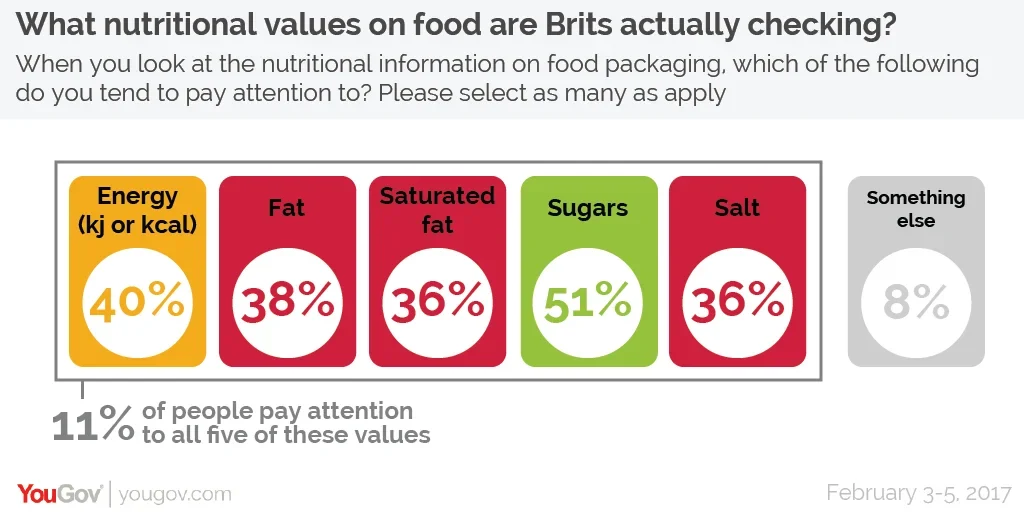New research from YouGov finds over a fifth of Brits never look at any of the nutritional information on food packaging
The drive to improve the nutritional content of food seems like it has never been greater. Last month Public Health England called on businesses to cut the sugar content of their food by 20% by 2020. This follows legislation by the government that will tax the sugar content of drinks from 2018 onwards.
A voluntary scheme introduced by the Department of Health in 2013 now sees many food manufacturers providing a “traffic light” system of showing the calorie, fat, saturated fat, sugar and salt content of each item. But this system will only be useful if people actually check it.
Now new research from YouGov Omnibus finds that while almost three quarters (72%) check at least one of the five main nutritional values that appear on food packaging, only 11% of people are paying attention to all five of them. And nearly a quarter of people (23%) admit that they never look at any of the nutritional information on food packaging.
Of the five main nutritional values, sugar is the one that Brits are most likely to scrutinise. Just over half of Brits (51%) say they pay attention to how much sugar food contains when they’re checking the nutritional value of food.

Brits are notably less likely to check any of the other four nutritional values – with the next most commonly checked value being the calorie count at 40%. Similar levels (38%) check fat and salt levels (both 36%). A further 8% of people also check other nutritional values on food that are not included in the traffic light system – such as fibre or protein.
The research also finds that men check nutritional value less than women. Around three in ten (29%) men say they never look at the nutritional information on food packaging compared to one in six (17%) women. Men are also less likely than women to check any individual nutritional value, with the divide on calories being the widest – 48% of women check the calorie count on food packaging, compared to just 32% of men.
Photo: iStockphoto







